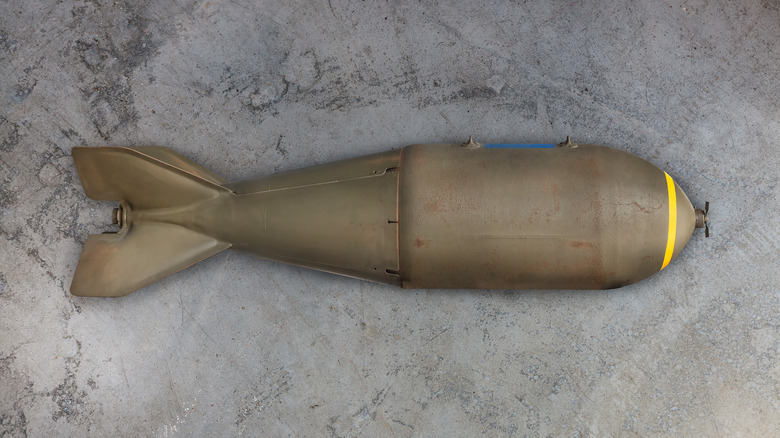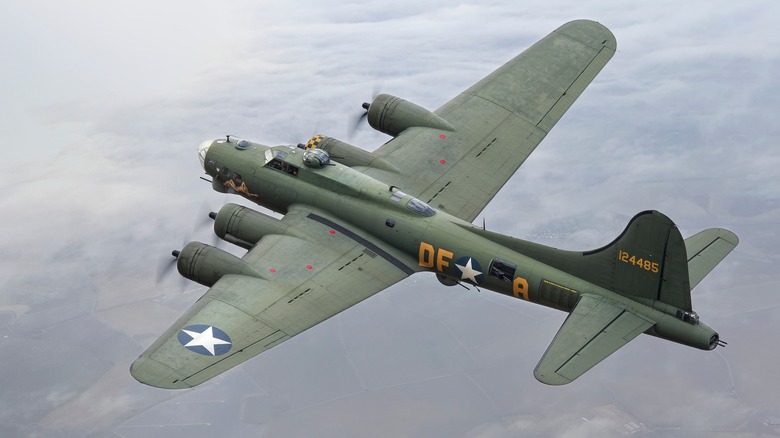Why Did Some WW2 Bombs Have Propellers? Here's What They Were For
If you've ever visited a World War II museum and seen some of the dummy bombs on display, you may have noticed a distinct, unusual characteristic on some of them. Some of these bombs possessed tiny propellers on the front, or both front and back. A propeller is usually used for control purposes like steering or accelerating a plane, but could a propeller so tiny serve that purpose? The answer is "no" — but if not that, then what?
Rather than anything to do with controlling a bomb's flight, the propellers acted as a timed detonation system. The propellers were connected directly to the bomb's internal detonator, and once they were released, their rotation slowly moved an activation spike toward the fuse. With this relatively simple framework, a bomb loaded onto one of the legendary planes of WW2 could be primed to detonate in a specific timespan, which could be subtly tweaked depending on the nature of the intended target.
The propellers were attached to the bomb's fuzes
The propellers on some World War II-era bombs were meant to delay the bombs' detonation without requiring direct remote activation. World War II was a showcase of major new scientific developments like the bunker buster bomb, but remote activation wasn't quite ready yet.
The propellers were attached directly to a bomb's internal fuze, the mechanism by which the bomb is detonated. (If you're thrown by that spelling, "fuze" is the military's spelling for a mechanical or electric detonator, as opposed to a pyrotechnic "fuse.") While loaded on a bomber plane like the Boeing B-17 Flying Fortress that helped win World War II, the propeller would be held in place by a safety pin. When the bomb was dropped, the safety pin was naturally pulled out, letting the propeller spin freely.
As the bomb fell, the air pressure caused the propeller to spin at a precisely calculated interval. That pushed a small screw deeper inside the bomb, carrying either a detonation spike or electrical charge. When the screw reached the end of its line, the detonator was activated, and the bomb was ready to explode on impact. By timing the detonation's delay to the propeller's rotation, the bomb had time to fall clear of the plane, as well as reach its intended target, like an enemy runway or hangar.
Of course, situations can change on a bombing run, which is why some bombs were equipped with propellers on both front and back; two propellers means two fuzes for two possible detonations. If the pilot wanted the bomb to detonate a few moments after initial impact, such as after piercing through a hangar, the rear propeller could have its pin pulled so it wouldn't detonate on the roof.

